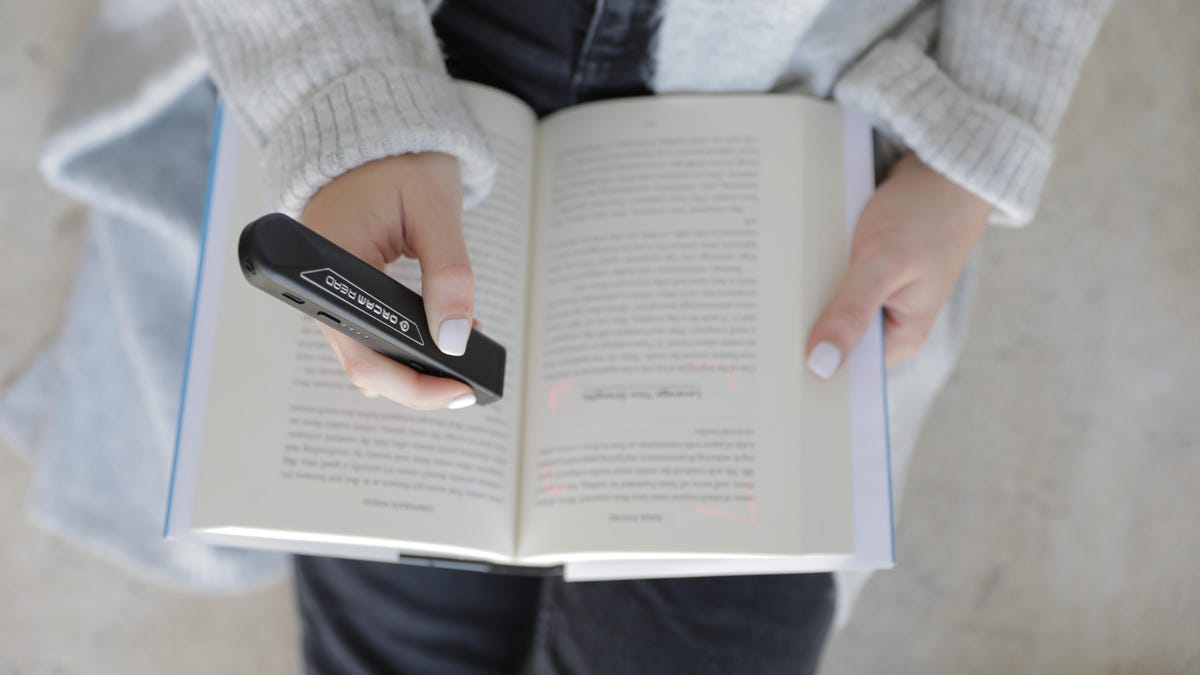New CES 2020 gadgets from OrCam and more want to help people with dyslexia read
A handful of companies offer up solutions, from a lamp to glasses to an AI-powered text reader.

With OrCam Read, people point to a block of text, push a button and then listen to the handheld device read that passage.
Reading can be a challenge for the nearly 20% of people with symptoms of dyslexia, but at CES 2020, a handful of products -- from a lamp to a digital reader to glasses -- aim to make things easier.
Dyslexia, a learning disability that affects language skills, impacts people differently, but most struggle to identify speech sounds in a word or understand how letters represent those sounds. It's not clear what the causes of dyslexia are, though studies have shown there are differences in the way that the brains of people with dyslexia function and develop, according to the International Dyslexia Association.
OrCam, a company that uses AI and machine learning to develop accessibility products, says its handheld OrCam Read device can help people with reading difficulties such as dyslexia or reading fatigue. When you point the device at a block of text and hit a button, it'll send out a laser beam highlighting the selected text and start reading a page or section out loud.
OrCam Read works on both printed and on-screen text. The wireless device, which will retail for $1,500, is expected to launch in the US within months before heading to other countries like Germany and Japan.
See also
- CNET's 20 favorite products of CES 2020
- All the cool new gadgets at CES 2020
- Full coverage of CES 2020
Other products from OrCam include the MyEye 2, a small, wireless device that clips to the side of your glasses and reads printed and digital text aloud. It's geared toward people with vision impairments and works using gestures: point to text to get it to start reading, and hold up your hand to get it to stop. You can also train it to learn faces so that it'll tell you when someone is approaching or standing nearby. MyEye 2 retails for $4,500 and is available in around 50 countries and 25 languages.
Eliminating the "mirror effect"
Lexilight has adjustable light waves to make reading easier.
Other products aim to tackle dyslexia in alternative ways. Lexilife, a French startup, created a lamp called Lexilight that lets out a pulsated and modulated light designed to eliminate the "mirror effect," which makes someone see two mirror versions of a letter at the same time. Users can turn two dials on the back of the lamp to adjust the light wave until they're able to read more easily.
Lexilight will be on the market in France later this month, and will retail for €549 ($610). Paola Bourdon, the company's head of business development and partnership who also has dyslexia, says it has a 90% success rate.
"If I had this when I was a child," she says, "it would have changed my life."
Lexilens is designed to filter out mirror images to help people distinguish letters.
Another French startup, Abeye, is looking to help people with dyslexia using a pair of specially designed glasses called Lexilens. The company cites as inspiration a 2017 French study that suggests symmetry between both eyes is a probable cause of dyslexia. Lexilens is geared toward children and adjusts the modulation of light to make reading easier for wearers. It essentially filters out the mirror image some people may see so they can accurately distinguish letters.
It's targeted toward kids, said CEO and founder Michael Kodochian, because "they're the ones who need it most." Adults typically have learned to cope with dyslexia as they've gotten older, he said.
Lexilens has an 80% success rate, according to Kodochian. It's slated to launch in France in October. A price hasn't been set yet.

